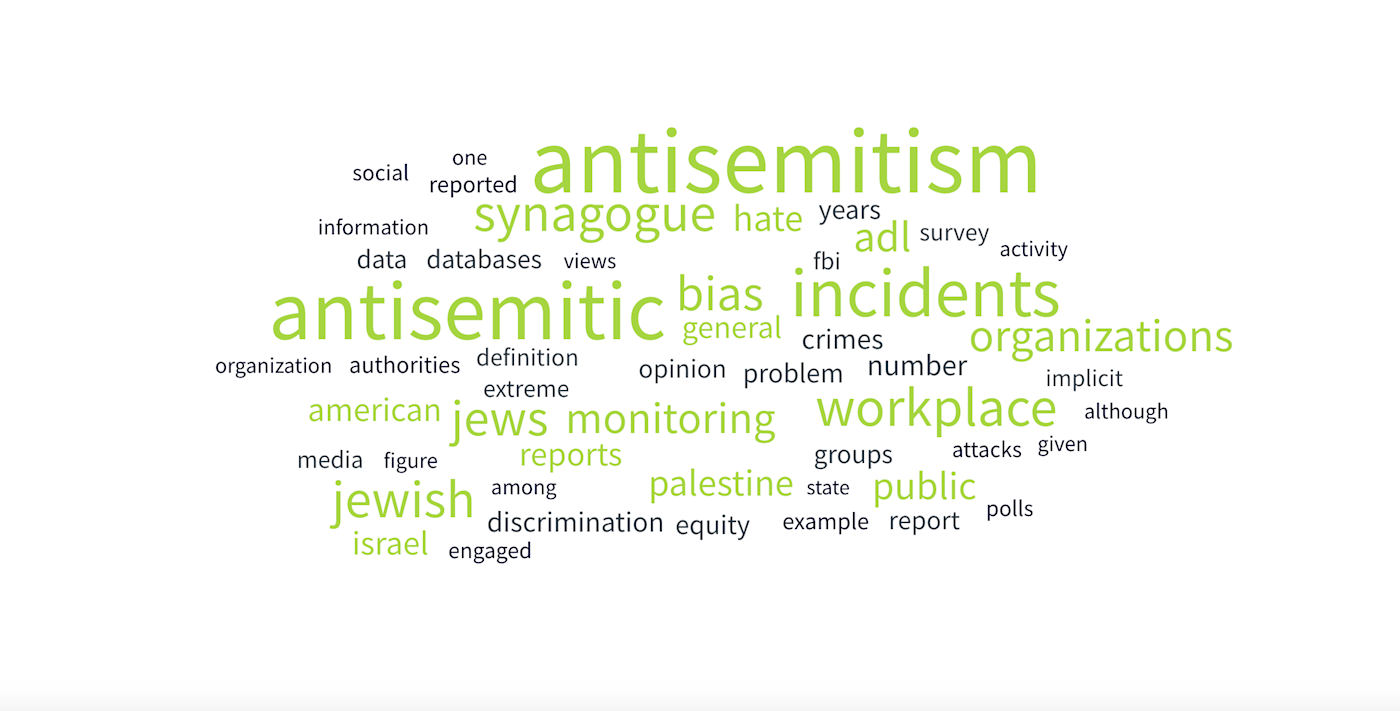
Combatting Antisemitism in the Workplace
BiasSync
ShareStudies show an alarming rise in antisemitism. So much so that there is a trend of increasing regulatory requirements. A February 3, 2025 announcement from the U.S. Department of Justice increases federal scruitiny and accountability for higher education, with the expectation this is going to apply to workplaces as well. Ohio and California have already passed laws addressing antisemitism.
Learning about and then addressing these challenges is essential not only for fostering equity but also for mitigating risks tied to discrimination. In the workplace, implicit bias, religious bias, and ethnic bias often intersect, creating challenges for leaders striving to build inclusive environments. This guide explores how antisemitism manifests in professional settings and offers actionable steps to promote understanding and inclusion.
The Escalation of Hate and Its Workplace Implications
Hate doesn’t emerge in a vacuum; it grows unchecked if early signs are ignored. Alyza Lewin, J.D., President of the Louis D. Brandeis Center for Human Rights Under Law, explains, “Hate escalates. If you don’t address biased attitudes early, they intensify—first slurs and jokes, then marginalization, exclusion, and ultimately violence.” Understanding this progression highlights why workplace leaders must address even subtle signs of bias.
Addressing antisemitism requires proactive measures to ensure inclusion and belonging in workplace culture. It also demands an understanding of the unique ways antisemitism and implicit bias can surface, particularly when individuals or systems perpetuate stereotypes or marginalize Jewish employees. “What happens in the world flows into the workplace,” notes Michele Ruiz, CEO and Co-founder of BiasSync, “We must recognize the fear and anxiety that can result when bias is allowed to escalate unchecked.”
Antisemitism’s impact is particularly profound in professional settings.
“For Jewish employees, heightened anxiety is a reality. Many feel they must hide their identity to feel safe,” Ruiz notes. Addressing these challenges requires understanding how implicit and religious biases operate and ensuring workplace cultures promote inclusion and belonging.
Defining Antisemitism in Modern Workplaces
Antisemitism today is more complex than many realize. It often intersects with ethnic and religious bias, targeting Jewish employees based on their identity, ancestry, or association with Israel. “Antisemitism always adapts to the values of its era, blaming Jews for society’s problems,” explains Lewin.
Leaders must recognize that antisemitism doesn’t always appear as overt aggression. Microaggressions, invalidations, and exclusionary comments are common in workplaces. For instance, statements like, "Oh, you’re Jewish—are you for killing kids?" or denying Jewish connections to Israel are not just offensive; they erode inclusion and create hostile work environments.
The Role of Cultural Humility in Combating Bias
Promoting inclusion starts with cultural humility—a willingness to learn and address how bias, including implicit and ethnic bias, affects employees. Lewin emphasizes the importance of educating teams about Jewish identity and its multifaceted nature. “Jews aren’t just a religious group; they’re also an ethnic group with shared ancestry and history,” she notes. Misunderstanding these aspects often leads to stereotyping and exclusion.
Ruiz adds, “Cultural humility helps leaders view concerns about bias through the same lens, regardless of the group involved. If you’d take a complaint about racial bias seriously, the same must apply to antisemitism.”
Strategies for Combatting Antisemitism
1. Education and Awareness
Implement training on implicit bias, religious bias, and cultural sensitivity to ensure all employees understand and respect diverse identities. BiasSync offers tools like cultural humility assessments and live training sessions to support these efforts.
2. Encourage Open Dialogue
Foster an environment where employees feel comfortable sharing concerns about bias or discrimination. Leaders should approach these conversations with empathy and neutrality, Ruiz advises. “Taking off your personal feelings hat and putting on your leadership hat is critical for handling these issues professionally and objectively,” she says.
3. Recognize the Impact of Policies and Statements
Company-wide communications or policies can unintentionally alienate employees if they appear to take sides in politically sensitive issues. Ruiz notes, “Some statements may erase or deny parts of Jewish identity, such as referring to Israelis as colonizers, which ignores their ancestral connection to the land.” Framing Jewish employees as "privileged" without acknowledging the diversity within Jewish communities perpetuates stereotypes and creates division.
4. Support Employee Resource Groups (ERGs)
Providing ERGs for Jewish employees acknowledges their shared ethnic and ancestral identity. Lewin explains, “If your organization offers ERGs for other ethnic groups, you are obligated to do the same for Jewish employees to ensure equity.”
5. Mitigate Social Media Risks
Employees’ personal posts on social media can sometimes amplify antisemitic sentiments and create hostility. Organizations should clarify their expectations for respectful discourse, both in and outside the workplace, while respecting free speech.
Fostering Inclusion and Belonging
An inclusive workplace actively addresses antisemitism, implicit bias, and other forms of discrimination. By ensuring that policies and practices promote respect for diverse identities, leaders create an environment where employees feel a true sense of belonging. Lewin sums it up: “It’s about ensuring no one has to hide or deny their identity to feel safe and included at work. Cultural humility and proactive measures are essential to achieving that.”
For more insights into fostering inclusion and mitigating implicit biases – including religious-based and ethnic-based bias, BiasSync offers a range of tools and expert-led training to help organizations lead with equity and belonging in mind. Contact us to learn more. For specific strategies on combatting antisemitism in the workplace, we encourage you to watch the full webinar.
Not just diversity. Inclusion.
Diversity is not just about numbers. It’s about people’s experiences in the workplace. If you’re ready to understand how bias impacts your company—with data to make effective changes, contact us now.